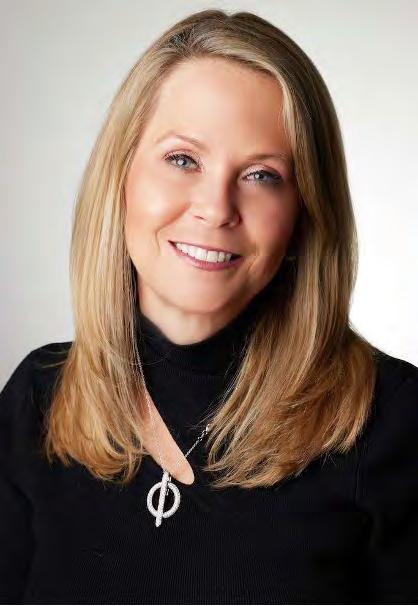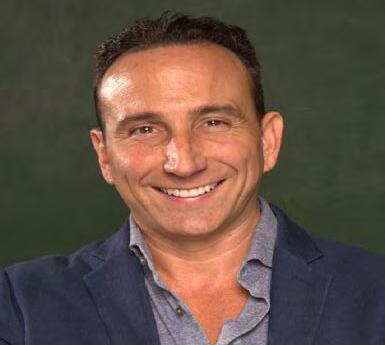




























































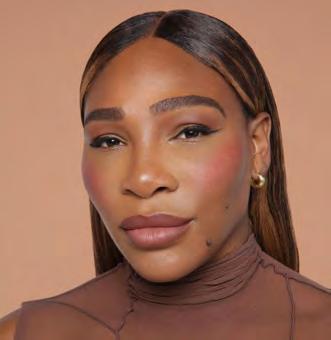

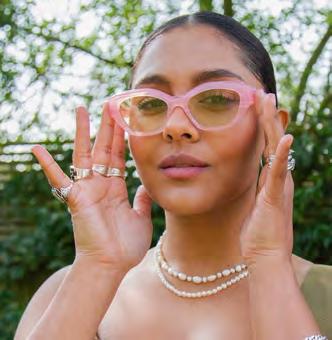

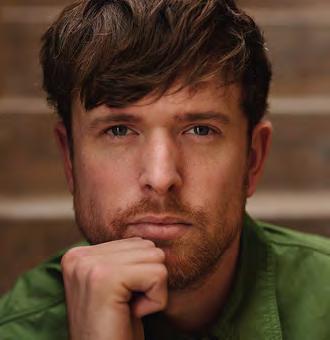
AT A TIME when the world needs creativity and inspiration like never before, the 72nd edition of the Cannes Lions Festival of Creativity is stepping up. Across an action-packed week, the iconic event will present delegates with a world-class line-up of global thought leaders, pioneering brands and cultural changemakers.
With more than 150 hours of original content, brands and talent confirmed include Apple, Duolingo, Wicked director Jon M Chu and sporting legend Serena Willams, attending alongside Reckitt. YouTube’s Neal Mohan, Hello Sunshine founder Reese Witherspoon, Grammy-winning musician James Blake, McLaren Racing CEO


Zak Brown and social media star Kai Cenat point to the diversity of voices that will be sharing insights. Unveiling this year’s line-up, Natasha Woodwal, director of content, LIONS, said: “This year’s programme reflects the immense transformation under way in the creative industries. From a
AGAINST the backdrop of polarised politics and the US administration’s mixed messaging on tariffs, another dominant theme during Cannes Lions will be how to survive and thrive in these volatile times. This will be explored, for example, in the session A New Era of Uncertainty: Finding Success in Riskier Times. Judy Smith and Jon Wilkins, founding partners of strategic advisory firm The Intangibles, will explore how to build and protect a brand in a climate of growing uncertainty. This discussion will include new insights from senior leaders around the world, courtesy of the World Federation of Advertisers. Similar themes TURN TO PAGE 3






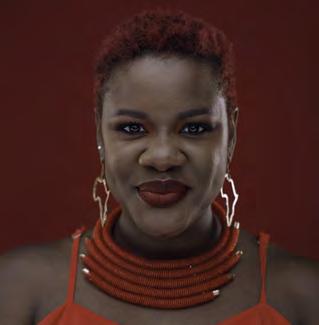


record number of content proposals, we’ve curated a dynamic agenda that brings together the sharpest minds, the most pioneering brands and the cultural disruptors shaping our future. Built around five content streams, the programme is designed to help our global community navigate the broad range of topics, skills and trends shaping the future of our industry.”
The first of the Festival’s five thematic pillars is Innovation Unwrapped, which focuses on the pioneers, technologies and transformations that are shaping tomorrow — including Reckitt and global sports icon and businesswoman Serena Williams in discussion on how businesses, investors and change-makers can lead through fresh ideas, diverse voices and re-imagined systems. In the popular Future Gazers series, experts including Tom Morton, Marina Mansour and Rei Inamoto will predict coming shifts in the creative and business landscapes.
The second of the five Festival tracks, The Creativity Toolbox, examines the craft, processes and techniques behind creative excellence. P&G presents Timeless Creativity, with Marc Pritchard, a talk that will delve into the lessons brands can learn from timeless creative campaigns and the ongoing challenge of building lasting brands. Elsewhere, VML’s seminar, Defying Gravity, will explore the creative narratives that break through. VML chief creative officer, Debbi Vandeven, director Jon M Chu and actor/comedian Bowen Yang will share insights on how to create stories that defy expectations.
Another key session from Burlesque
The Musical will look at stage stories that ignite engagement, featuring Broadway producers Sue Gilad and Larry Rogowsky.
Creativity is also at the heart of the third Lions track, Creative Impact, co-created with WARC. This sets out to provide the ultimate guide to proving the value and effectiveness of creativity. Highlights include the Creative Marketer of the Year Seminar, with Apple’s Tor Myhren discussing how the company’s strategies continue to set new standards for creativity and brand building. Duolingo’s seminar, The Tech Marketer’s Playbook, showcases how the company has become a beloved social-first brand.
Elsewhere, the Talent and Cultures stream is dedicated to showcasing the people and practices behind thriving creative organisations. The ZBD Talent and The MosaiQs seminar will see Laura Winson, Charlotte Marian Pearson, Emma Lines and Natalie-Amber Freegard take to the stage to discuss the inclusion revolution. In GS&P’s talk, Going from Agency Flash in the Pan to Eternal Flame, agency founders Greg Hahn and Jeff Goodby will deliver a candid, no-holds-barred discussion on the highs, lows and sheer chaos of building and sustaining a world-class creative agency.
Also within the Talent and Cultures track, the daily Changemakers series will feature powerful conversations with inspiring people including Pedro Lerma focusing on how they are using their platforms to champion underrepresented voices.
The last of the Festival’s five pillars is Insights and Trends, which focuses on the shifting consumer behaviours, cultural forces and business imperatives that are influencing creative decision-making. Here delegates can drop in on sessions like F5 Shanghai’s The Globalisation of Chinese Brands, where Adams Fan, Yang Zhang and Renee Huang will explore the opportunities and challenges for Chinese brands. The Quollective will also take to the stage, with speakers Alemu Emuron and Maureen Rutabingwa telling the story of a cult brand that took a two-footed leap into culture.
Another key element of this track is the Inside the Jury Room sessions with Jury Presidents including Seiya Matsumiya, Andrea Diquez and Keka Morelle. This insight into the inner workings of Cannes Lions is supported by Tours of the Work.
Festival favourites
Alongside Future Gazers and Changemakers, other returning strands include Secret Speaker and CMOs in the Spotlight, which provides an insight into marketing decision-making at firms including Mars, Amazon, Nestle, American Express, McDonald’s, Philips, Unilever, Renault and Heineken. Other highlights include the return of the Saatchi & Saatchi New Creator Showcase, led this year by Saatchi & Saatchi London chief creative officer Franki Goodwin. Now in its 35th year, Goodwin will look back on the agency’s long love affair with emerging talent introducing the work
arise in A Reckoning for Purpose: Reinforce or Reinvent?
Here, Richard Edelman, CEO of Edelman; Nikki Haley, former US State Governor and former Ambassador to the UN; Dan Schulman, board chair, JUST Capital; and Mishal Husain, editorat-large, Bloomberg Weekend, look at how brand purpose is now under scrutiny. Geopolitical pressures, stakeholder fatigue and growing demands for proof over positioning mean brands are now expected to say more — or less — with greater consequence. During the session, the speakers will unpack findings from Edelman’s 2025 Brand Trust research. Together, they’ll explore how purpose is shifting under pressure, what strategies are breaking through and where risks and opportunities lie. Elsewhere, Cannes Lions friend and ad industry legend John Hegarty will explore the need for agility in Adapt or Die: Why Giants Can’t Dance, a Monday session in the Debussy.
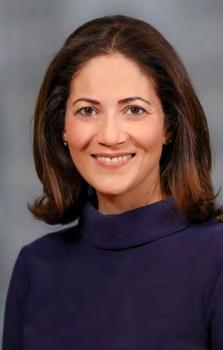
Hegarty will argue that, in today’s fast-moving world, size can be a liability. He will explain how big companies often drown in process, avoiding fresh ideas and losing the thing that made them great: creativity. He’ll explore how daring ideas, fast decisions and cultural courage, not scale, are the drivers of success.
of 10 new creators.
Summing up the breadth of creativity, talent and insights on display, Simon Cook, LIONS CEO, said: “The 2025 programme will dive deeper than ever before into the strategic, cultural and technological factors influencing creativity at a global scale. Our delegates will hear from a wide spectrum of leaders and specialisms, including CEOs, chief marketing officers, creative leaders, content creators, entertainment and sports icons, producers, directors and even mascots — it’s representative of a multifaceted industry that is using the breadth of creativity to drive progress and business growth.”
Pursuing gender parity
Within the framework of the five streams, Cannes Lions 2025 will explore a myriad of themes that capture the imagination and drive activism among the creative community.
Always front of mind for Cannes Lions, the issue of gender equality continues to be a source of inspiration, debate and action, with the flagship See It Be It programme now embarking on its 11th edition. This year, 20 women and non-binary people have been invited to participate in the four-day event, with Trinidad and Tobago and Venezuela represented for the first time. As in previous years, the event includes mentorship opportunities and private masterclasses with industry leaders, as well as backstage access and session invitations tailored to each participant’s career goals. Since its launch in 2014, See It Be It has brought together over 100 women and non-binary people from 35 markets, with 75% of the programme’s alumni having been promoted and 63% now operating at a creative director level or above. Frank Starling, chief DEI officer, LIONS, said: “The See It Be It programme was established in response to the industry’s gender imbalance. Despite women representing 55.6% of adland’s



workforce, according to the 2024 IPA Agency Census, research from the Creative Equals states that only 24% of women globally are creative directors. As the industry’s gender gap widens, it’s more important than ever that we continue to provide global creatives with the tools to excel in their careers to help bridge this gap.” Sessions focusing on gender include Joy is Rebellion: Hello Sunshine and Gen Z Rewrite the Narrative. Featuring Reese Witherspoon and Kory Marchisotto, chief marketing officer at e.l.f Beauty, this Wednesday highlight in the Debussy Theatre will explore how Hello Sunshine is on a mission to change the narrative for women. For the first time, Witherspoon will speak about a new initiative and brand being launched by Hello Sunshine. The session will also ask where young women are finding joy and inspiration — in a world where they don’t feel represented by brands. The drive to change the narrative on gender is also part of the fabric of the MORE GRLS workshop, which will provide a negotiation playbook for women in creativity.
Led by Laura Florence, Larissa Zucatelli and Camila Moletta, the workshop aims to empower women in the industry to advocate for themselves and elevate their careers. Through stories and hands-on strategies, it will help women turn challenges into opportunities and secure the recognition and compensation they deserve.
Embracing diversity and challenging stereotypes
DEI initiatives may be under attack around the world, but the creative community continues to recognise that diversity and inclusion drive better business outcomes. In Neurodivergent Minds: They Don’t Need Advertising – Advertising Needs Them, Havas CEO and chairman Yannick Bolloré explores the benefits of embracing neurodiversity with Michael Barbaro, host of The
Daily, New York Times. Taking place on Monday in the Lumière, the speakers will argue that brands risk losing out if they don’t unlock the power of neurodiverse thinking and creativity. To back this case, Bolloré will call on work from Havas’ Neurodiversity Center of Excellence, which offers tools to embed neurodivergent thinking into strategy and innovation.
Another session that explores a similar theme is Chronic Creative Disorder: Imagination as a Neurological Condition, led by Andrey Tyukavkin, chief invention officer and global ECD LePub. Also taking place on Monday, this talk will explore how neurodiversity can unlock more and better ideas in creative businesses.
Cannes Lions will also host several sessions that challenge stereotypes. Long-standing partner SAWA, the Global Cinema Advertising Association, is running a session entitled Change Minds: Shift Global Perspectives Through Big-Screen Storytelling. Here SAWA president and Pearl & Dean CEO Kathryn Jacob and acclaimed filmmaker Gurinder Chadha will explore how cinema can reframe global perspectives on identity, inclusion and equality. In a similar vein, Amazon Ads session Age Ain’t Nothing but a Number? Rethinking Generational Marketing will challenge lazy tropes about demographic behaviour. Elliot Pigram, global managing director, Crowd DNA; Isaac Baley, professor of economics, Universitat Pompeu Fabra; and Yaw Owusu, creative consultant Nothin’ But The Music Limited will explore the benefits and limitations of age-based marketing and introduce a new strategy based on shared values, beliefs and attitudes.
Media platforms, brands and creative agencies are all having to adjust to the unstoppable rise of the creator economy, and Cannes Lions is doing its best to articulate
what is happening, through innovations such as LIONS Creators. Launched in 2024, the second edition of LIONS Creators provides a dedicated pass, programme and place for creators at Cannes Lions. Interwoven with the main Festival, LIONS Creators provides tools, insights and tips to help firms establish themselves in this fast-growing arena and expand their business.
A stellar line-up of creators is descending on Cannes to provide insights to delegates. In addition to the afore-mentioned Kai Cenat, top names include Amelia Dimoldenberg, Grace Beverley, Bethenny Frankel and Jake Shane.
The impact of digital-first platforms and talent is also evident in the main Cannes Lions programme, with TikTok hosting a session called How Corn Dogs, Cucumbers and Creators Can Change Everything. TikTok global head of business marketing and commercial partnerships Sofia Hernandez will be joined by food critic Keith Lee and content creator Logan Moffitt to discuss the impact of trendsetting content on consumer behaviour — and how brands can leverage this opportunity.
A similar theme will be discussed in another Lions session, You Can’t Fake Brand Love: The Secret to Creator Partnerships That Win. Here Creative Vision founder Jamie Gutfreund and rugby player turned creator Ilona Maher will explore how creator-led brand love can become the foundation for influence that actually works. Of course, creators need to be measurable if they are to be of interest to brands. In Are Creators Really Effective? WARC Media head of content Alex Brownsell and CreativeX CEO and founder Anastasia Leng will ask ‘does working with creators work, or are marketers being caught up in the hype and wasting precious ad dollars? CreativeX will reveal the findings of new research into what makes an effective influencer marketing campaign, as well as the pitfalls they should look to avoid. Still on the creator economy, one of the most intriguing trends right now is creators becoming entrepreneurs in their own right, building diverse businesses that have the potential to take market share away from legacy brands.
This paradigm shift is the subject of The New C-level: How Creator Entrepreneurism Is Reshaping Business. In what promises to be a fascinating session Raina Penchansky, CEO and co-founder of Digital Brand Architects and UTA Creators co-head, will chat to Colin Rosenblum and Samir Chaudry, hosts of The Colin and Samir Show. The YouTube stars will discuss how they and others are building businesses and partnering with brands in new ways.
Positivity, wellbeing and the environment
Cannes Lions wouldn’t be Cannes Lions without some effort to promote the intersection between creativity and positive messaging. Positivity is always present in the work and also in several Festival sessions. One specific event to look forward to is Kill ‘Em With Positivity: A Meet-Up with Goodvertising’s Thomas Kolster. In a world growing angrier and more divided, especially around sustainability, marketing activist Kolster believes the most powerful way to respond isn’t with more noise, but with kindness. Delegates who empathise with this can meet-up with Kolster to explore a different kind of activism — one rooted in positivity, empathy and love.
Elsewhere, wellbeing is at the heart of Impact Innovators: Building a Healthier World, Reckitt’s session with Serena Williams. Here the tennis legend sits down with Sheila Redzepi, chief communications and corporate affairs officer Reckitt; Catherine Casey Nanda, managing partner Acumen America; and Tania Bryer, CNBC Anchor, to discuss the tragic reality that half of the world’s population still lacks access to basic care. The session will look at how healthcare entrepreneurs are designing life-changing health solutions, rethinking care models and building businesses that create lasting impact. But at the same time, they need funding and support to thrive.
In the meantime, delegates who want to ensure that sustainability stays front of mind can drop into the Lions Sustainability Hub, which is open every day. This is the Festival’s central hub for delegates passionate about
‘Launching the Lions B2B
Summit is a natural next step in bringing the global B2B community together in Cannes’ Simon Cook
building a sustainable future for the industry, where they can meet like-minded individuals and be inspired.
B2B emerges from the shadows Finally, 2025 also sees the launch of an inaugural Lions B2B Summit — welcome recognition that B2B marketing abounds with its own unique creativity. Taking place on June 17, the half-day event will bring together B2B marketers, decision-makers and creative leaders for an exclusive day of networking, insights and industry-shaping discussions. Featuring LinkedIn as the headline partner, and Stein IAS as the supporting partner, the Summit will explore discussions on how creativity strengthens brand reputation, the role of connections and influence in B2B.
LIONS CEO Simon Cook said: “To give some context to B2B at Cannes Lions, the Creative B2B Lions launched in 2022. The Creative B2B Lions are now entering their fourth year, providing the benchmark for an industry that continues to grow significantly — with worldwide B2B digital ad spend set to nearly triple its pre-pandemic level by 2026. Launching the Lions B2B Summit is a natural next step in bringing the global B2B community together in Cannes. We’re delighted to have LinkedIn on board as our official Lions B2B Partner for 2025. Since our launch of the B2B Lions, LinkedIn has been a much-valued partner and supporter in championing the work in this area.”
LinkedIn’s chief marketing and strategy officer, Jessica Jensen, will share remarks at the Summit, and other speakers and panellists include: Valerie Beauchamp, vice-president, global head of agency development & marketer education, LinkedIn; Michael Aimette, executive vice-president, chief creative officer, FCB New York; Bridget Evans, global head of business marketing, Spotify; Dr Marcus Collins, clinical assistant professor of marketing, University of Michigan – Stephen M Ross School of Business; Tom Stein, chairman and chief brand officer, Stein IAS; and Jim Lesser, chief brand officer, ServiceNow.
In the age of AI will we lose ‘the human touch’?
DURING THE Festival’s Opening Seminar, Apple | Human After All, Apple vice-president of creative marketing, Tor Myhren, will address the question: “Can the human touch save creativity in the age of algorithms?” Part of the Creative Impact content stream, co-curated with WARC, Myhren’s talk goes behind the work that drove Apple to becoming the 2025 recipient of the Cannes Lions Creative Marketer of the Year Award, and shows how sometimes “it’s as important to feel it as it is to get it”.
The issue of human/data/AI interaction is also at the heart of the session from R/GA and Sephora — Unshittifying CX: Reconnecting Funnels and Feelings. At a time
when customer experience satisfaction is declining rapidly, R/GA senior vice-president, executive strategy director Yael Cesarkas; and Sephora vice-president, marketing, social and influencer, Brent Mitchell, will discuss the current “loyalty crisis”. With CX detaching itself from human emotions, they will call out the “technically sound but emotionally hollow systems that drive the ‘enshittification’ of digital experiences”.
Cannes Lions will also see a lot of debate over the role of data and GenAI. Long-standing Cannes Lions supporter Publicis Groupe, for example, has announced that its Cannes Closed Door Sessions are back, with a new mission: unlocking real — and
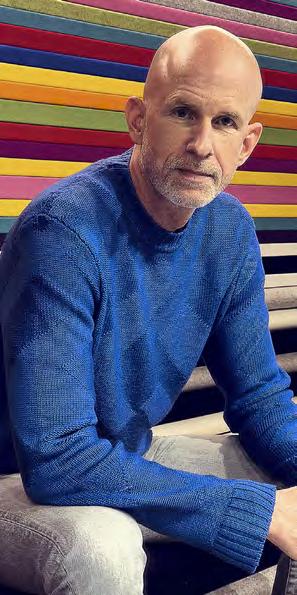
immediate — AI upside for clients, in an economic downturn.
With the industry facing a challenging economic climate, Publicis said that celebrating creativity for its own sake won’t be enough. Leveraging Cannes Lions as a platform for progress, it wants to “put creativity at the heart of AI solutions capable of increasing market share and reducing costs immediately”. Intriguingly, however, a key theme right now is the risk of allowing AI to render human input redundant. This will be discussed in The Human Touch: Creativity Can’t Be Automated. In this session, Stagwell chairman and CEO Mark Penn, United Airlines chief advertising office Maggie Schmerin and 72andSunny global CEO Evin Shutt will assert the importance of “bold storytelling that only humans can deliver”.
The key message from the session will be that the secret to breakthrough branding lies in “blending cutting-edge tech with the irreplaceable power of human creativity”.
Natasha Maharaj & Bruno Bertelli
HEINEKEN DESPERADOS / LEPUB

Andrey Tyukavkin LEPUB CHRONIC CREATIVE DISORDER
Monday, June 16 at 4 pm
Palais, Terrace Stage
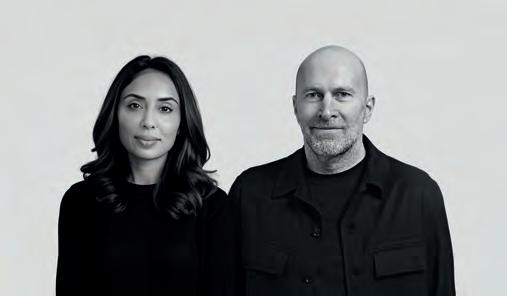
Tuesday, June 17 at 2:30 pm
Palais, Creator’s Rooftop
Jill Kelly, North America CEO of global media agency Assembly,
explores how lived experience shapes authentic leadership and the urgent need for advertisers to go beyond superficial representation

WHEN I first landed in the US at six years old, I didn’t speak a word of English. I stepped off a plane from Seoul, South Korea into JFK Airport and into the arms of my new Irish/ American family, a family I didn’t yet know how to communicate with. My earliest memories of America are vivid: my grandparents’ shock of white hair and green eyes, my mother’s tall frame and kind smile, and a world so utterly foreign it felt like a story I wasn’t sure I belonged in.
In those early days, creativity wasn’t a luxury, it was a survival tool. I quickly learned that to be heard, seen and accepted I had to find new ways to connect. Storytelling, humour, the clothes I chose and the jokes I cracked all became my language before language. I often say that my creativity was born in the margins of belonging.
That’s why, decades later, leading a media agency in a rapidly changing world, I can’t help but see the parallels between my personal journey and the
‘Without trust, our stories — no matter how well-crafted — fall flat’
industry’s current reckoning. In a global media landscape that’s more intersectional and interconnected than ever, we are still too often chasing reach over resonance. And it’s costing us — in trust, in authenticity, in relevance.
Recent research from Assembly’s Unexpected Consequences study underscores this reality. One of the study’s chapters, The Ripple Effects of a Global Economy, revealed that 69% of Americans feel they’re missing the bedrock of trusted media. It’s a striking statistic, and a powerful reminder that it’s not just about where messages show up, but whether people believe in the environments they encounter them. Without trust, our stories — no matter how well-crafted — fall flat.
As Cannes Lions 2025 leans into global intersectionality, expanded creator economies and deeper commitments to diversity and inclusion, it’s clear our industry isn’t lacking in awareness. What we’re lacking is nuance.
That’s because media buying can no longer afford to be transactional, and representation isn’t a numbers game. It’s not about how many diverse faces appear in a campaign or how many markets a message penetrates, it must be about who is telling the story, when it’s being told and the conditions it is placed.
The stories we tell and the ones we believe shape us. They define how we see ourselves, how we understand others and how we move through the world.
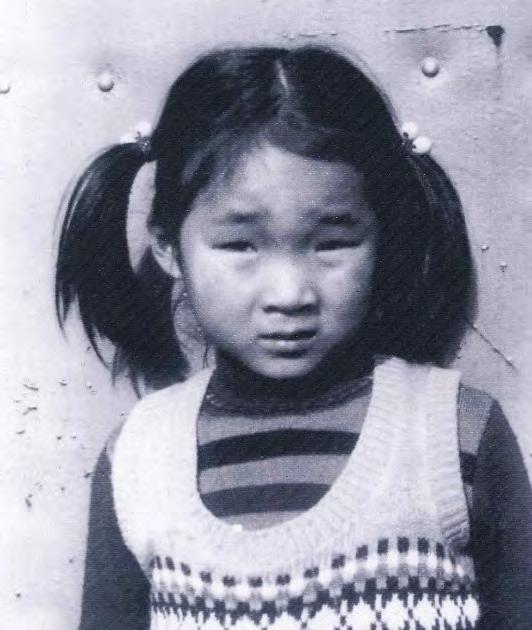
Some stories entertain, some educate and some leave a mark that lingers for a lifetime. For me, one of those stories was about the monsters in the attic. At least in my six-year-old mind, where in the orphanage in Korea we were told
‘We owe it to ourselves, and to the audiences we serve, to stop chasing reach for reach’s sake’
that little girls sent to the attic disappeared. On my last night there, I was summoned and as I climbed those stairs trembling, I came to find a room — not with monsters, but with neatly folded clothes meant for new beginnings. I chose an outfit for my journey to America, stepped out of the attic, and onto a new path. That moment shaped me, and it’s a reminder I carry into every boardroom and briefing: what we fear, what we don’t understand and the unexpected consequence are often where the most profound stories live.
“Pain plus reflection equals progress” — a core principle from Ray Dalio’s book Principles — applies not only to life and leadership, but to advertising too. Our industry has experienced its share of pain: cultural missteps, performative gestures and surface-level inclusion. The question is, are we truly reflecting? Are we asking who’s missing from the table, whose narratives have been flattened and whose voices we’ve overlooked in our pursuit of scale and growth?
Modern media isn’t just about impressions and CPMs. It’s about intentionality. It’s about understanding the lived
experiences behind the data points. It’s about trusting creators and communities to narrate their own truths. And it’s about ensuring that the media we buy doesn’t just reach people, but resonates with them because it sees them, hears them and values them.
Assembly’s research also challenged another industry misconception: that brand-building in media has lost its value. In fact, 57% of people remember their last website search very or extremely well, compared to just 38% who vividly recall the last TV ad they saw. That stat doesn’t diminish the importance of mass media, but it does reaffirm the growing power of intentional, contextual and choice-driven digital moments. It’s proof that meaningful engagement happens when audiences are active participants, not passive recipients.
It’s not enough for difference to be tolerated; it must be sought out, celebrated and meaningfully reflected in the work we create and where we place it. Trust isn’t built through volume, but through intention in the stories we tell, who gets to tell them and how thoughtfully we deliver them to the world.
Progress in advertising and media means that we move past transactional tactics and take the time to reflect on the cultural weight of our decisions. Resonance requires nuance. And our responsibility is to make space for authentic storytelling and intentional placements that truly reflect the richness and complexity of the audiences we serve.
So, as we gather in Cannes this year, let’s move past the applause for surface-level representation. Let’s demand nuance. Let’s ask harder questions: Are we placing these stories intentionally? Are we empowering communities as co-creators, not just audiences? Are we leaving room for the complexity, vulnerability and messiness that makes stories and people real?
We owe it to ourselves, to our industry, and to the audiences we serve to stop chasing reach for reach’s sake. Because in the end, it’s not how far a message travels that defines its value — it’s how deeply it lands.

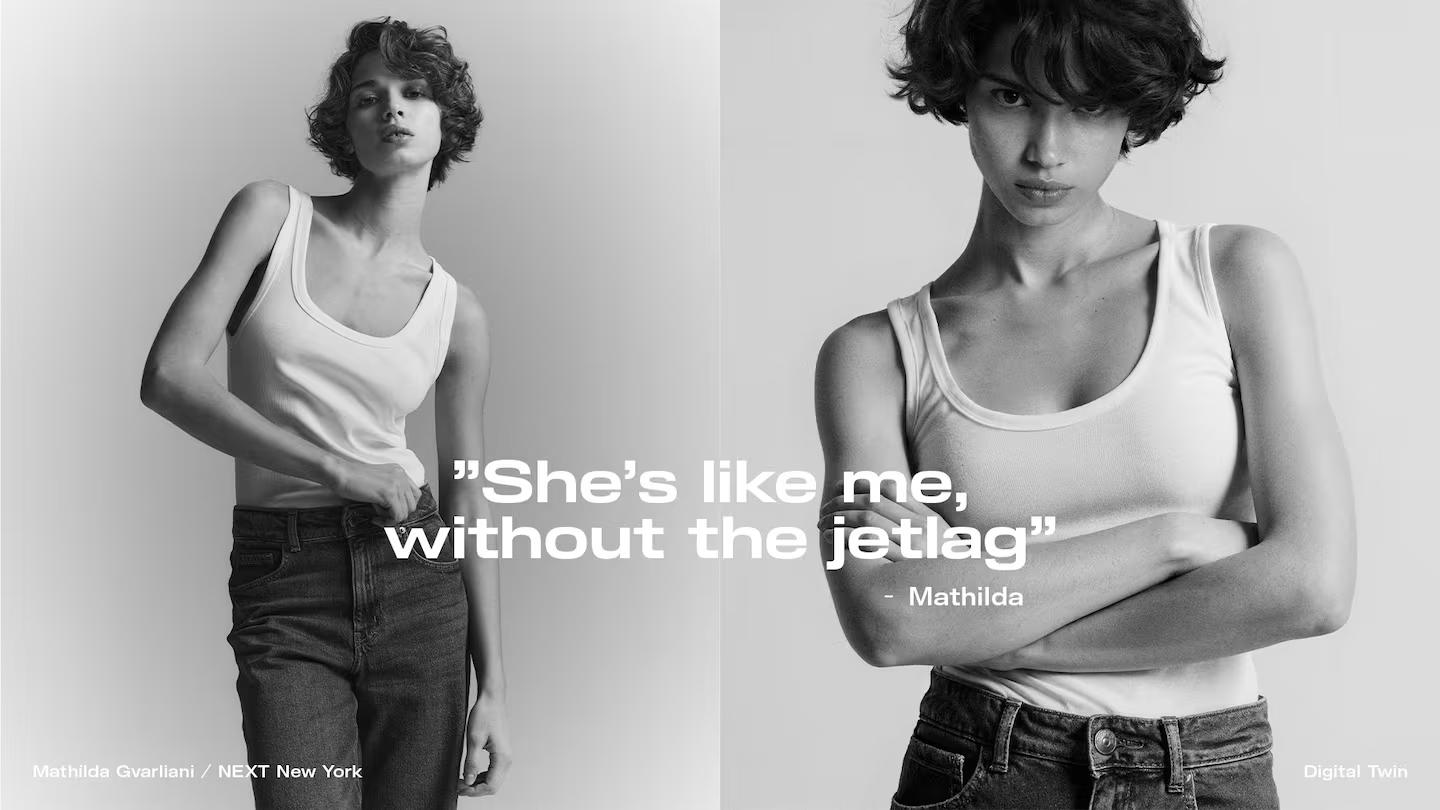
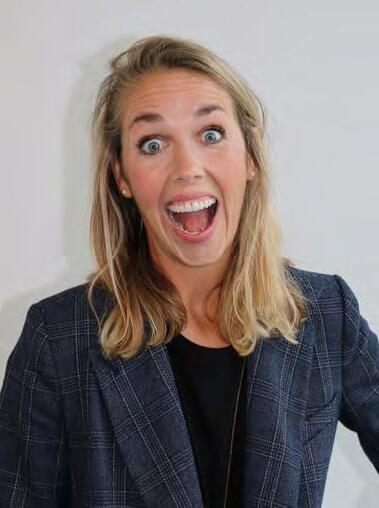
As marketing evolves, the brands cutting through are the ones that embrace paradox — not avoid it.
By Katherine Scarrow
EACH YEAR at Globe Content Studio, we produce ‘Tactics & Takeaways’ — a trend-focused report that explores how culture, technology and shifting consumer habits are shaping the future of content and creativity. We also host it as a live event at The Globe and Mail Centre, where marketers gather to unpack what’s changing and what’s next. Here’s a look at the 2025 edition.
This year felt different — less like plotting a path forward, more like reading emotional weather. That’s because the biggest theme in 2025 isn’t a new format, platform or design style. It’s contradiction. The best creative work today lives in paradox — between speed and stillness, machine and human, nostalgia and innovation. And for brands trying to stand out, that tension is exactly where the opportunity lies.
In a time when creativity is being stretched, sped up and automated, I keep coming back to this question: what do we actually mean by creativity
right now?
It’s not just inventiveness or originality. Some of the best creative breakthroughs in history came from unlikely intersections — Steve Jobs stumbling into calligraphy, Albert Einstein solving equations through violin practice. Creativity often comes down to connecting the unconnected. That’s the energy I’m seeing everywhere in 2025.
Right now, the most interesting ideas are coming from that in-between space. Creativity today is both instinctive and algorithmic. It moves fast — and sometimes knows when to pause. It feels nostalgic and futuristic at once. It’s not just a nice-to-have. It’s a business driver.
Dentsu found that 80% of global leaders believe creativity drives growth. And the World Economic Forum ranked creative thinking as one of the top skills for future success.
Here are the six creative tensions I believe are defining 2025 — and how smart brands are turning them into strength.
Balancing AI efficiency with human emotion
We’re deep into the AI era. We’ve used it in our studio to speed up asset generation, storyboarding, even headlines. AI can now churn out campaign drafts in minutes. But let’s be honest — it’s not magic. The content often lacks depth, nuance or soul.
Recent research from NielsenIQ shows that consumers can easily spot AI-generated ads — and often find them less engaging, more irritating and harder to recall than traditional creative. The result? A negative halo effect that can drag down overall brand perception. That’s why the strongest work in 2025 is coming from brands that blend AI scale with unmistakably human inputs — emotion, humour, cultural intelligence. Mango used AI-generated models for its ‘Sunset Dream’ campaign, while H&M’s ‘Digital Twin’ project allows real models to license AI versions of themselves.
Short-form still rules — but longform is fighting back
We’re still riding the wave of micro-content. TikToks, Reels, YouTube Shorts — they dominate daily attention. Pop-Tarts leans into chaos with parody collabs. Lay’s reran a 15-second ad eight times in a row and it worked.
According to Statista, users spend an average of 52 minutes a day on TikTok, yet 56% of consumers (Business Insider) feel more emotionally connected to brands that invest in longform storytelling.
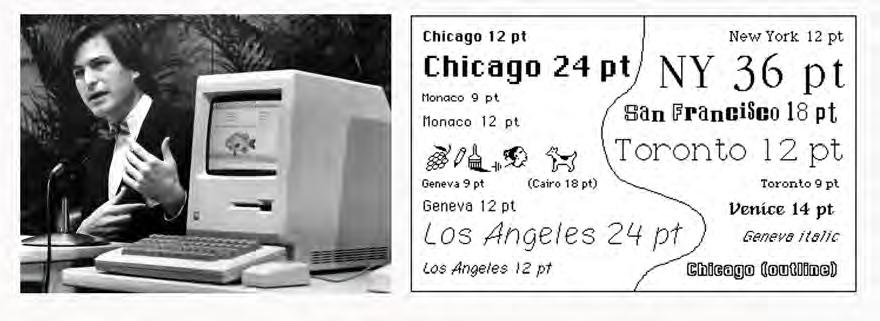

Brands like MSCHF are flipping the script with art books and zines sold through body wash. They’re proving that going deep still matters. In our work, we’ve seen major wins when we pair punchy hooks with layered, long-form storytelling. Attention spans aren’t dying, they’re becoming more intentional.
How motion, sound and mood are redefining engagement
The bar for static content is higher than ever. Sensory branding — movement, sound, mood — is no longer optional. It’s the new default.
Spotify’s looping Canvas visuals drive 145% more shares, according to internal reports. YouTube is now the world’s biggest platform for podcast discovery. And Nerds Gummy Clusters exploded during the Super Bowl with a kaleidoscopic, jazz-fuelled spot that helped drive a 900% sales increase over four years.
At Globe Content Studio, we’re integrating more audio-reactive assets, subtle animation and atmospheric visuals using tools like Runway and Midjourney. When you design for the senses, you build memory.
Why analogue stands out in a digital world
Here’s the irony: in a world optimised for digital engagement, real experiences
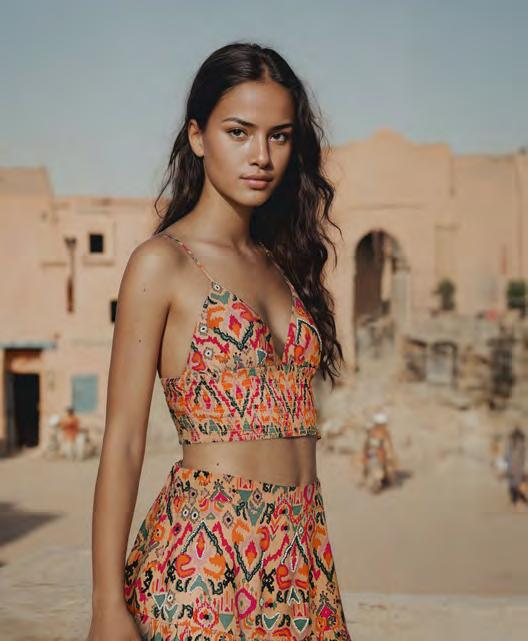
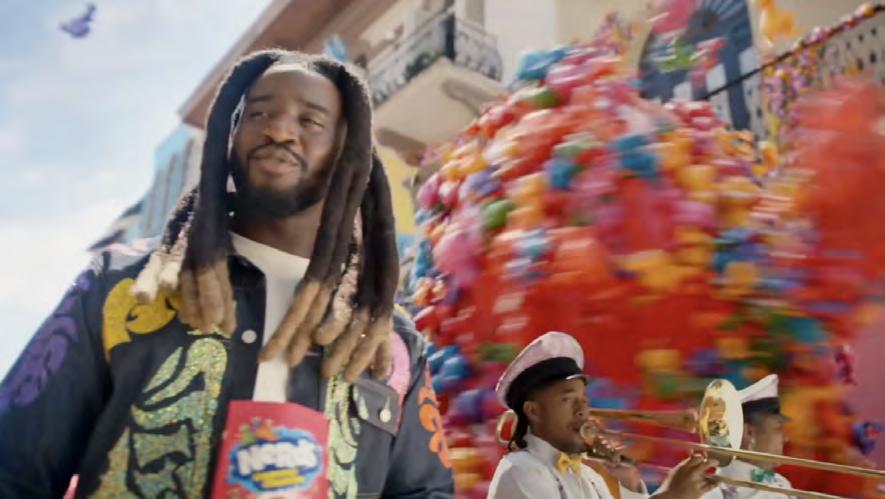


Top
Nerds Gummy Clusters Superbowl ad
Middle left
Olipop old can designs
Middle right
Vacation Sunscreen Rebrand
Below middle DKNY’s street libraries
Bottom Heineken’s ‘Boring Phone’
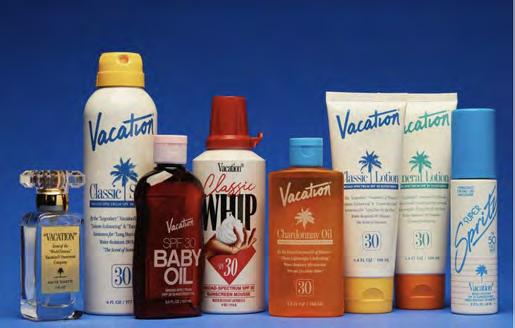
feel revolutionary.
Heineken’s ‘Boring Phone’ only makes calls and sends texts. Prada surprised VIPs with a minimalist box containing nothing but original short stories by Ottessa Moshfegh — no logos, no influencers, just paper and prose. DKNY’s street libraries bring book swapping to urban sidewalks. Etsy’s ‘Keep Commerce Human’ campaign underscores the power of handmade. The company reports 87% of its sales come from shops with fewer than 10 employees — people, not corporations.
We’re building more tactile and analogue elements into our strategies, too — from printed zines to handmade props in social video. That slight friction? It’s not a bug. It’s the feature.
Bold restraint is helping brands own the middle
Minimalism isn’t disappearing, it’s just dialling up the contrast. This isn’t quiet luxury. It’s expressive minimalism: oversized type, punchy colour, white space that feels intentional.
Poppi and Olipop are leading the altsoda category with bold, graphic cans that prove minimal can still make a
statement. RXBAR keeps things stark and text heavy. Aesop, still the gold-tier standard, remains rooted in neutrality with clinical precision.
Design doesn’t have to shout, but it should still leave an impression.
When nostalgia meets next Nostalgia still moves the needle. But in 2025, it’s about remixing — not recycling.
SunnyD rebranded as a millennial seltzer. Vacation Sunscreen doubled down on 1980s Miami energy, with scented SPF and retro pool-club vibes. Even Pepsi and MTV are resurrecting VHSstyle filters and old-school logos. The danger? Go full retro and you risk irrelevance. Go too sleek and you lose warmth. That’s why we love the 80/20 blend — 80% now, 20% then. It hits the sweet spot: familiar, with a twist.
So what does creativity demand now?
The best ideas aren’t born in the extremes, they emerge from the tension in between. It’s not about being pro-future or pro-nostalgia, fast or slow, machine or human. It’s about layering. Reframing. Remixing.
James Webb Young, an ad industry pioneer from the 1940s, believed creativity wasn’t some mystical spark — it was a repeatable process. Absorb widely. Make new connections. Step back. Let the idea rise. Then refine it until it’s sharp. That cycle still powers great creative work today. And the more varied the inputs, the stronger the ideas that emerge.
In a time defined by contradiction, the strongest creative work doesn’t resolve tension, it uses it.
Katherine Scarrow is the manager of creative strategy at Globe Content Studio, the content marketing arm of The Globe and Mail. Based in Toronto, she works with Canada’s most forward-thinking brands to develop editorial-style storytelling that engages audiences and drives business results.
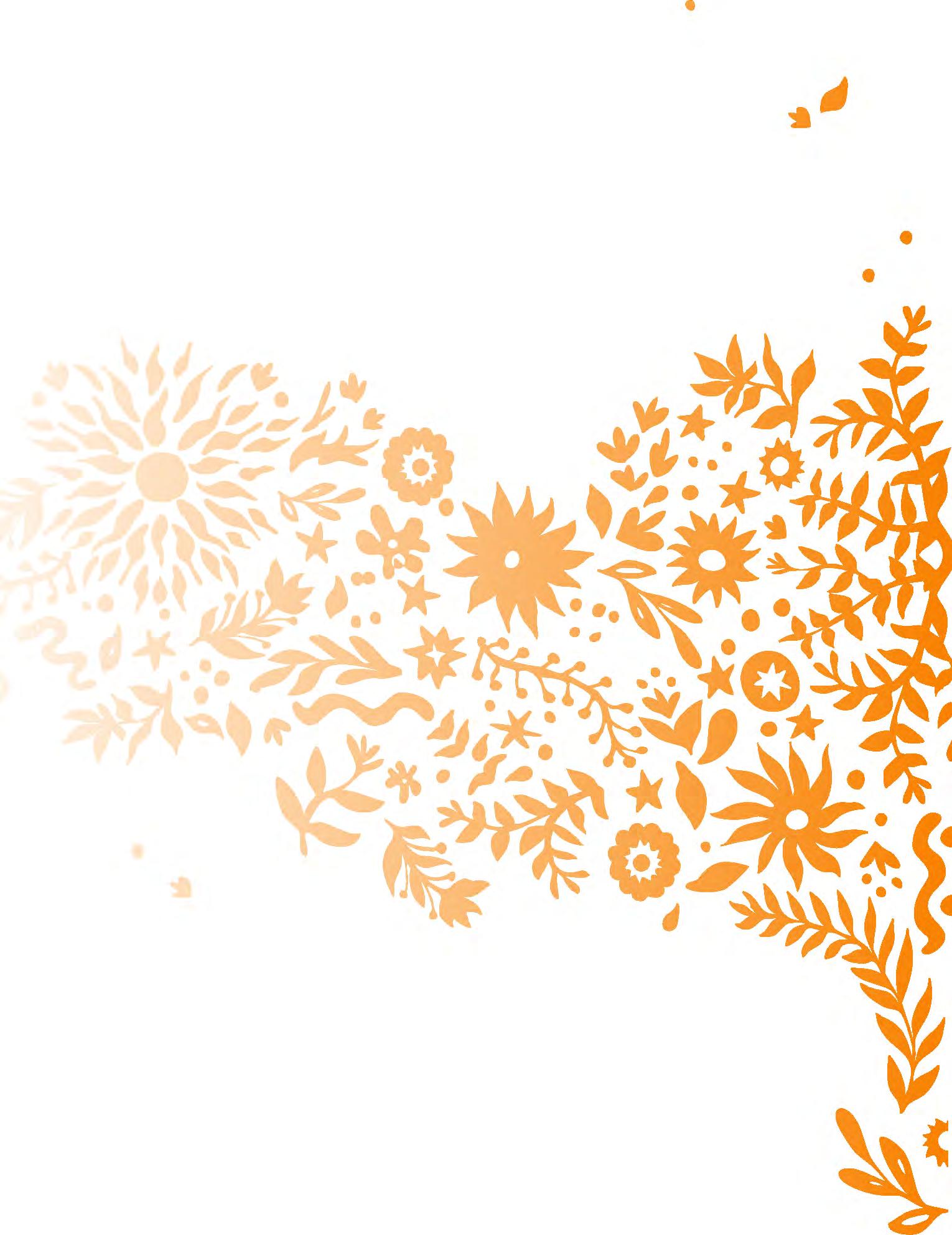
A CHORUS of influential leaders in marketing, advertising and public relations has issued an urgent call to American brands: understanding and authentically connecting with the Hispanic audience is not merely an option for inclusion, but a fundamental strategic imperative for growth and relevance in today’s and tomorrow’s market. They emphasise that this focus must be clearly distinguished from general diversity, equity and inclusion (DEI) initiatives and requires sustained investment in cultural knowledge, diverse talent and personalised strategies.
Jessica Ricaurte, chief revenue officer at Adsmovil, begins by clarifying a persistent confusion: “Right now there seems to be confusion between DEI and inclusive marketing. Most of the government policies have a direct impact on DEI, not Hispanic marketing. Hispanic marketing means leveraging consumer insights to engage with this cohort which has a direct impact on purchase intent and brands growth. This has not been impacted by government policy. And let’s be clear, multicultural marketing existed long before DEI programmes.”
The unstoppable demographic and economic engine
The growth of the Hispanic population is only part of the story. Sonia V Diaz, founder and president of Zaid Communications and president of the Hispanic Public Relations Association (HPRA), details what this growth represents: “By 2050, the US Hispanic population is going to represent 78% of net new workers. That means that our majority labour force is going to be US Hispanic.” Diaz also highlights high college enrollment and entrepreneurship rates among Latinos, their GDP contributions and growing cultural influence, exemplified by “the arrival of Lionel Messi at Inter Miami” and increased media representation.
Sindy Chapa, associate professor and director of the Center for Hispanic Marketing Communication at Florida State University, reinforces this view: “The US is becoming more multicultural than ever. Hispanics are the fastest-growing ethnic group in the country and are projected to make up nearly one-third of the population by 2060. With higher birth rates and a younger average age, the Hispanic community represents a dynamic and influential segment.”
Julia Estacio, vice-president, group account director at Alma DDB (leading
‘The biggest risk for brands... is relying on a one-size-fitsall approach’
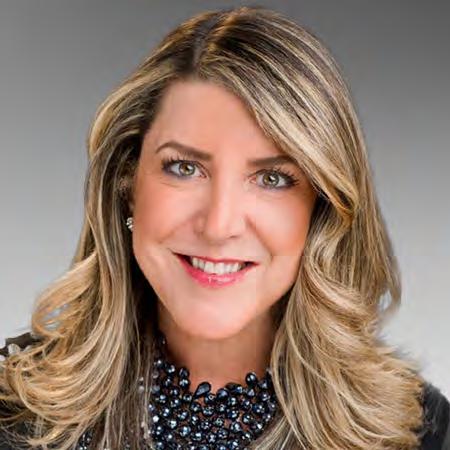
Liz Blacker

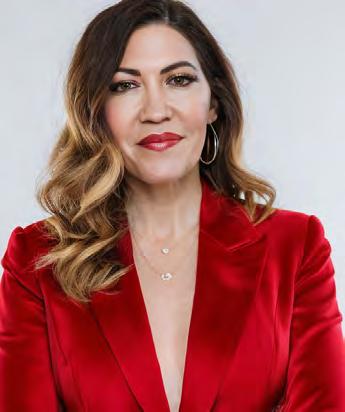
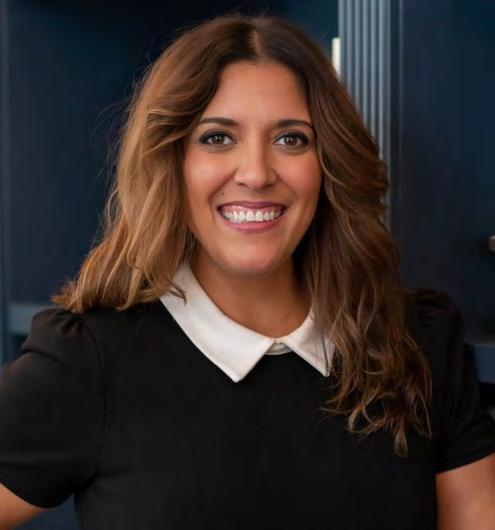

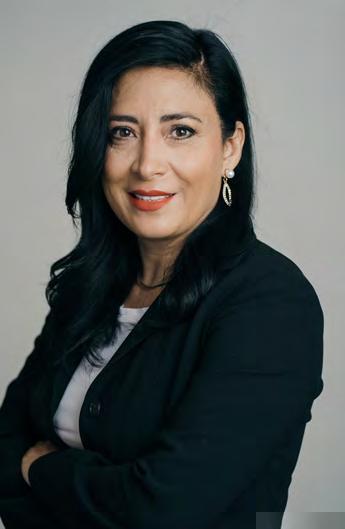
THE CARBON FOOTPRINT OF THE PRINT EDITION OF THE LIONS DAILY NEWS ENDS WHEN IT ARRIVES IN CANNES
If one person or 100 people read your printed copy of the Lions Daily News, postdelivery emissions remain at zero. That is not the case if you read it on a phone or tablet
The print and paper industry is one of the lowest industrial greenhouse gas emitters in Europe, accounting for just 0.8% of emissions (European Environment Agency)
The Lions Daily News is printed on responsibly sourced, 100% recyclable paper. If you don’t keep hold of your copy, please make sure it can be recycled
Our printing partner, Creamania, holds the ‘gold standard’ in environmental certification, being both ISO9001 (1999) and ISO14001 (2012) accredited Creamania also holds the French Imprim’Vert certificate, which covers responsible disposal or recycling of waste materials and the non-use of toxic chemicals
All inks used are certified to be of vegetable origin
No chemicals are used in the processing of the printing plates, only water – and after use they are recycled to be used in other industries
We will continue in our efforts to minimise the impact of your Lions Daily News on the environment
PUBLISHER, LIONS DAILY NEWS BOUTIQUE MEDIA INTERNATIONAL LTD.

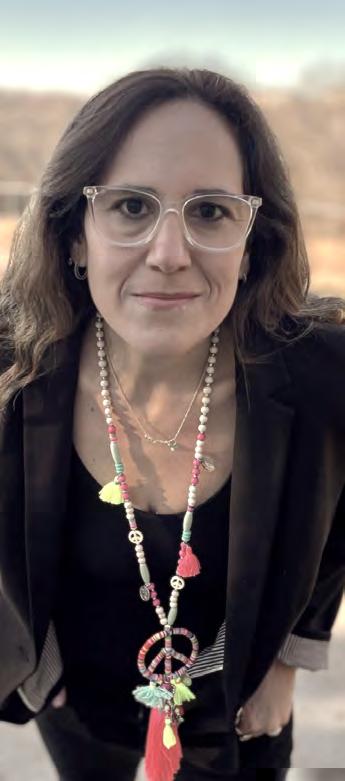
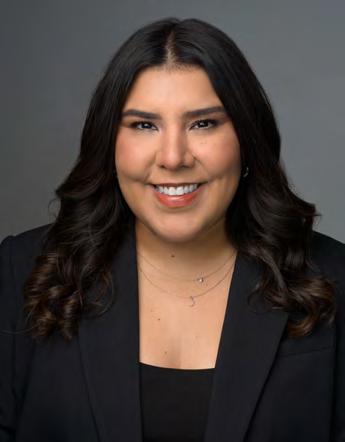



the McDonald’s brand), translates this into business impact. “The growth of the Hispanic population is not a side conversation about inclusion — it’s about smart business, a demand engine.” She references the impact of “a skyrocketing $2.5tr in purchasing power” and how “Hispanic culture… drives the mainstream.”
Stacie M de Armas, senior vice-president inclusive insights business inclusion, impact & belonging at Nielsen, adds: “This audience represents one of the few long-term growth engines in the US economy: young, digitally fluent and on the cusp of major life-stage purchases.”
The risks of inaction and superficiality
Ignoring or superficially treating this market carries significant risks. Luis Miguel Messianu, president-chief creative officer of MEL and co-chairman of The Board Círculo Creativo USA, says: “The US Hispanic audience isn’t just growing — it’s driving cultural, economic and digital shifts that make it indispensable to the future of brand growth and relevance. The biggest risk is treating Hispanic
marketing as a checkbox rather than a business imperative.”
Carla Dodds, chief marketing officer at Aarons, concurs: “The biggest risk is treating the audience as an afterthought and applying one-size-fits-all messaging. Even worse, is relying and building creativity based on stereotypes which results in polarisation.”
Marco Vega, co-founder, president and CSO of Creyentes, is blunt about the consequences. “The biggest risk? Falling into the trap of superficiality, the ‘Latino coating.’ …If you get it wrong, you risk not just missing out on this market, but actively alienating it. That means reinforcing stereotypes, mistranslating messages or treating the Hispanic audience as a monolith. The result: wasted budgets, damaged reputation and lost market share.”
Neilsen’s de Armas adds that “the biggest risk isn’t a misstep in tone — it’s underperformance. Brands that default to broad, generalised targeting — or worse, treat Hispanic outreach as a seasonal campaign — are leaving money on the table. When brands apply a one-size-fits-all approach, they dilute impact. That’s not just culturally clumsy — it’s economically inefficient.”
Lisette Arsuaga, co-president and coCEO of DMI Consulting, cautions: “Ill representation, stereotypes or invisibility is never appreciated.”
For Liz Blacker, executive vice-president, sales and marketing at Sabio: “The biggest risk for brands when trying to target the US Hispanic audience is relying on a one-size-fits-all approach.”
Mike Valdés-Fauli, president of Chemistry Cultura and co-founder, Latinos in sports, suggests a pragmatic approach in the current climate: “Rather than defend acronyms like DEI, we recommend companies focus on the business case for engaging Latino consumers and diversifying their workforce as a benefit for shareholders as much as employees.”
Strategy, nuance, and expertise
Connecting genuinely requires a shift in mindset and approach. Gigi García Russo, chief innovation & growth officer at Hunter, offers direct advice. “Hire us! Hire Hispanics to lead these brands, be on the team, and shape creative and communication strategies... Brands should remember that as an ethnic group, we can be super united in our Latino pride, but when it comes to our identity, we’re even prouder of what our nationality says about us.”
Flor Leisbachoff, co-founder, chief creative officer at BeautifulBeast,
emphasises complexity. “Hispanics are not a monolith. For brands to truly connect, they must go beyond surface-level representation and dive deep into the cultural nuances that matter. Context is everything. Think global, execute hyper-local. The
‘Brands must move from ‘inclusion as optics’ to ‘inclusion as optimisation’
game’s name is ‘empathy’.”
Jennifer Becerra, chief strategy & creative officer at H+M Communications, argues: “If the goal is to sell more, US Hispanics must be at the centre of your growth strategy... Brands must ditch generic playbooks and invest in culturally nuanced strategies... That starts with diverse teams, Latino agency partners, and storytelling built on cultural insight, not assumptions.”
Abe Garcia, chief creative officer at Dieste, speaks on the evolution of research: “The Hispanic market has never been a one-size-fits-all model, so we’ve always had to dig deeper... As interest has grown, so has the demand for more precise and nuanced data.”
Risk mitigation and measuring success
Experts agree that risk mitigation involves investing in knowledge and talent. Aarons’ Dodds recommends brands “invest in cultural fluency, diverse talent and partnerships, coupled with continuous learning”. Creyentes’ Vega advises: “Prioritise authenticity over tokenism: Collaborate with Hispanic talent and subject-matter experts at every stage. Measure impact: Track not just reach, but resonance.” His metaphor is powerful: “Don’t just invite Latinos to the party — give them a seat at the table, ask them to DJ and
let them help plan the menu.”
Sabio’s Blacker suggests: “By partnering with experts who deeply understand audience behaviour, brands can shift from reactive tactics to proactive strategies. The key lies in listening first.” DMI Consulting’s Arsuaga reiterates: “Working with experts in the Hispanic market who understand and value the differences between the segments, is a way to mitigate any risk.”
Neilsen’s Armas concludes: “Brands must move from ‘inclusion as optics’ to ‘inclusion as optimisation’. Rethink Hispanic strategy as a performance lever — not a checkbox. Invest consistently, personalise intelligently and measure with cultural fluency. For additional insights... Nielsen provides valuable research and tools.”
Loyalty and sustained growth
The effort is worthwhile. Alma DDB’s Estacio highlights loyalty: “When you earn their trust and love, they stick with you.” The Aaron’s Company CMO Carla Dodds sees the reward in “loyalty, advocacy and brand love that spans generations that translates into longterm revenue growth”. As H+M Communications’ Becerra summarises: “You don’t just earn attention; you unlock loyalty and spending power.”
The message from these leaders is unequivocal: the US Hispanic market is too large and dynamic an opportunity to be approached with superficial tactics or generalisations. It requires strategic investment, a commitment to cultural authenticity and the inclusion of Hispanic voices at all levels of decision-making to achieve significant and lasting impact.

